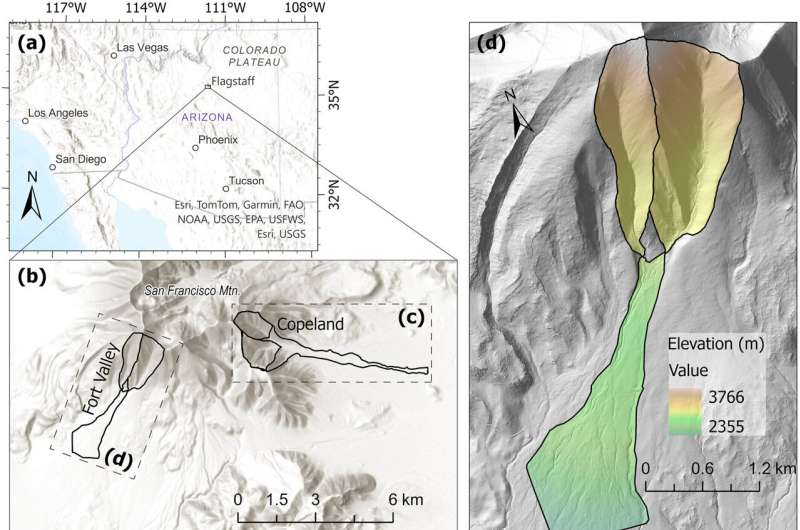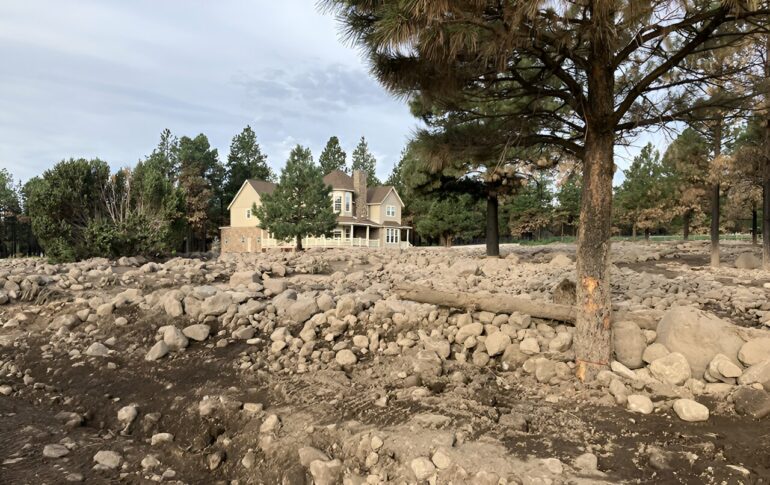New research from a team at Los Alamos National Laboratory is improving landslide prediction capabilities, making simulations faster and more accurate, which in turn will improve safety for communities that are at risk of their infrastructure being washed away.
The study is published in the journal Earth’s Future.
“Current methods for predicting where and how debris flow will happen after a fire are not used often enough, mainly because they take a lot of time and there are many uncertainties involved,” said corresponding author Tao Liu, a scientist in the Earth and Environmental Sciences division at Los Alamos. “Our study proposes a new approach using a model to predict debris flow behavior before a fire occurs.”
A common misconception is that after a wildfire is contained, the danger is over. Sometimes, however, the problems are just beginning. Postfire debris flows (PFDF) occur during or soon after a wildfire. These compound with the destruction of the fire, and they often come with little warning. The natural disasters are highly unpredictable and transpire very suddenly, which makes them even more dangerous. Thousands of people die each year as a result of landslides.
As a wildfire burns, it not only reduces soil infiltration, but also rips through the established root system and destabilizes the ground, paving the way for heavy rainfall to trigger landslides. This has historically caused an unexpected second wave of destruction in both the natural and built environments. This new research will positively impact national and global safety as these kinds of natural disasters can destroy homes, harm public infrastructure and disrupt economies.

(a) Location of study areas in Arizona; (b) Copeland watersheds and Fort Valley watersheds on the slope of the San Francisco Peaks, in northern Arizona; (c) Map of the Copeland area including two headwater drainage areas and the Copeland debris-flow inundation zone; (d) Map of Fort Valley watersheds and the alluvial fan.
In the study, the authors created a probabilistic PFDF inundation assessment and trained the model on data collected after the 2022 Pipeline Fire in northern Arizona. They used 10,000 optimized parameter instances to better determine the factors that indicate a PFDF is probable.
By determining the likelihood that an event such as a landslide will occur after wildfire before the fire even starts, scientists and stakeholders have time to take preventative action to protect the communities and ecosystems that lay within its wake. Measures such as increased ground cover plants, water channels, and retaining walls can all help protect the stability of ground post wildfire.
“This work not only gets us better prepared for postfire debris flow, but also offers guidance on how to use these models in future hazard assessments,” Liu said.
More information:
Tao Liu et al, A Prefire Approach for Probabilistic Assessments of Postfire Debris‐Flow Inundation, Earth’s Future (2024). DOI: 10.1029/2023EF004318
Provided by
Los Alamos National Laboratory
Citation:
New model framework aims to predict postfire debris flow behavior before a fire occurs (2024, August 12)



